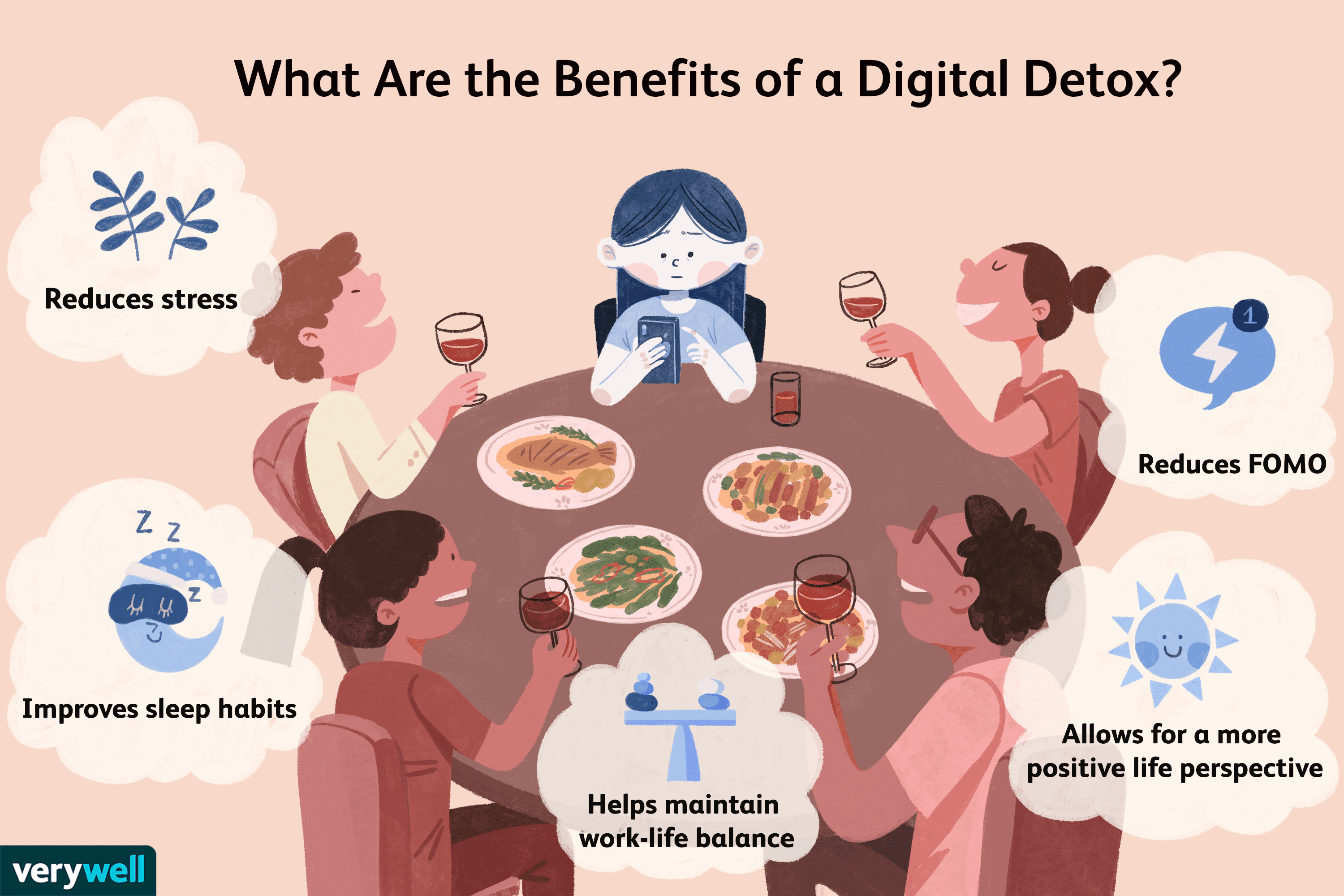In our increasingly connected world, it’s easy to feel overwhelmed by the constant barrage of notifications, emails, and social media updates. While technology has brought us many conveniences, being constantly plugged in can lead to stress, anxiety, and even burnout. A digital detox offers a chance to step back, reset, and reap numerous benefits for your mind and body. Here, we’ll explore the benefits of a digital detox and provide some practical steps to help you get started.
What is a Digital Detox?
A digital detox involves taking a break from electronic devices, including smartphones, computers, tablets, and even television. The goal is to reduce screen time, limit exposure to digital distractions, and give yourself time to reconnect with the offline world. While it can vary in length, a digital detox can last for a few hours, a day, or even a weekend, depending on your needs and preferences.
Benefits of a Digital Detox
Taking a break from technology can have a profound impact on both your mental and physical well-being. Here are some key benefits:
1. Improved Mental Clarity and Focus
When you step away from constant notifications and information overload, you’ll notice that your mind feels clearer and more focused. Without digital distractions, you can concentrate on tasks without interruption, leading to improved productivity and creativity. This break from technology also allows your brain to rest, which can improve your cognitive function and memory.
2. Reduced Stress and Anxiety
Constant exposure to digital media can lead to information overload, which often contributes to stress and anxiety. Scrolling through social media can sometimes fuel feelings of inadequacy, as we compare our lives to carefully curated images of others. A digital detox provides relief from these pressures, allowing you to live more in the moment and appreciate what you have.
3. Better Sleep Quality
Blue light emitted by screens interferes with melatonin production, the hormone that regulates sleep. Spending time on electronic devices, especially before bed, can disrupt your sleep cycle and make it harder to fall asleep. During a digital detox, reducing screen time—especially in the evening—can help you establish a healthier sleep routine and improve the quality of your rest.
4. Increased Mindfulness and Presence
A digital detox encourages you to be more mindful and present daily. Without the constant pull of technology, you can focus on engaging with the people around you, enjoying nature, and truly experiencing your surroundings. This can lead to deeper connections, greater self-awareness, and an increased sense of gratitude for the little things.
5. Enhanced Physical Health
Spending too much time on electronic devices often leads to a sedentary lifestyle, which can contribute to various health issues, such as poor posture, eye strain, and even weight gain. Taking a break from screens allows you to be more physically active and can lead to improved overall health.
How to Get Started with a Digital Detox
Embarking on a digital detox doesn’t have to be intimidating. Here are some simple steps to help you ease into it:
1. Set Clear Goals
Think about why you want to do a digital detox and what you hope to achieve. Are you looking to reduce stress, improve focus, or simply spend more quality time with loved ones? Knowing your goals will help you stay motivated and make it easier to stick with the detox.
2. Start Small
If the idea of a full digital detox feels overwhelming, start by reducing screen time for just a few hours each day. Consider dedicating specific periods, like mealtimes or the first hour after waking up, to being device-free. As you become more comfortable, gradually extend your detox periods.
3. Create a Device-Free Zone
Designate certain areas of your home, such as the bedroom or dining room, as device-free zones. This encourages you to be more present in these spaces and reduces the temptation to check your phone or computer.
4. Turn Off Notifications
Notifications are a major source of distraction. By turning off non-essential notifications on your phone and other devices, you’ll reduce the impulse to check them constantly. Alternatively, you can set your device to “Do Not Disturb” mode to avoid interruptions during your detox period.
5. Replace Digital Activities with Offline Hobbies
One of the best ways to stick with a digital detox is to replace screen time with activities that don’t require technology. Read a book, take up a new hobby, go for a walk, or spend time with friends and family. Engaging in offline activities not only reduces your screen time but also helps you rediscover the joys of being fully present.
6. Reflect on Your Experience
At the end of your digital detox, take some time to reflect on how you feel. Do you notice any changes in your mood, energy levels, or focus? Understanding the benefits you experienced can help reinforce the value of a digital detox and encourage you to make it a regular practice.
Making a Digital Detox Part of Your Routine
A digital detox doesn’t have to be a one-time event. Many people find that incorporating regular breaks from technology helps them maintain a healthier balance in their lives. You could try a weekly digital detox, where you take a break from screens for a few hours every weekend, or schedule a longer detox each month.
Conclusion
A digital detox is a powerful way to regain control over your time, reduce stress, and reconnect with the world around you. By taking intentional breaks from technology, you’ll experience improved mental clarity, better sleep, and a greater sense of mindfulness. Remember to start small, set realistic goals, and focus on replacing screen time with activities that bring you joy and fulfillment. With practice, a digital detox can become a refreshing and rewarding part of your routine.
